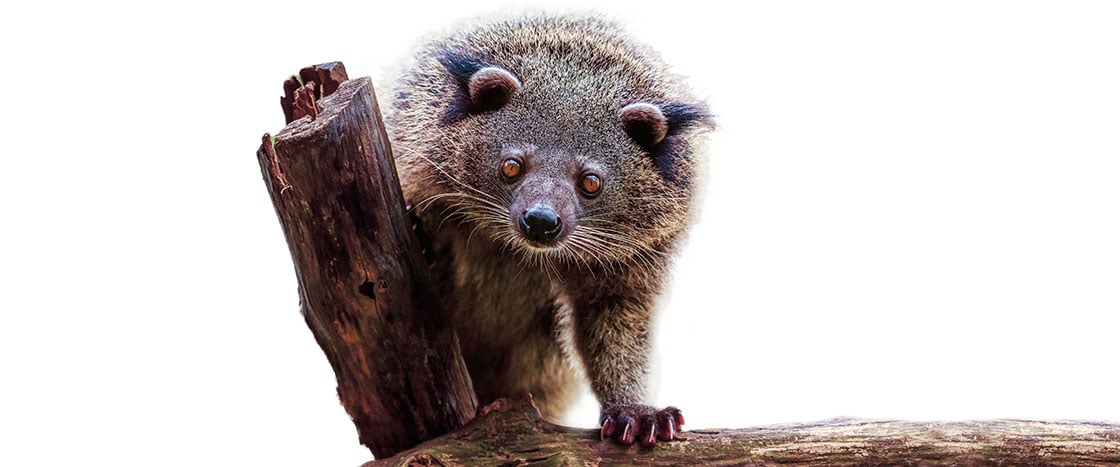Jim McMahon/Mapman R
The binturong lives in Asia.
It would be hard to find a wild binturong (BIN-too-rong). It is shy. It moves slowly. It lives high in rainforest trees.
But if a binturong were nearby, you would smell it. This animal smells just like hot, buttered popcorn!

